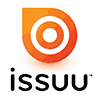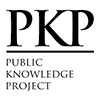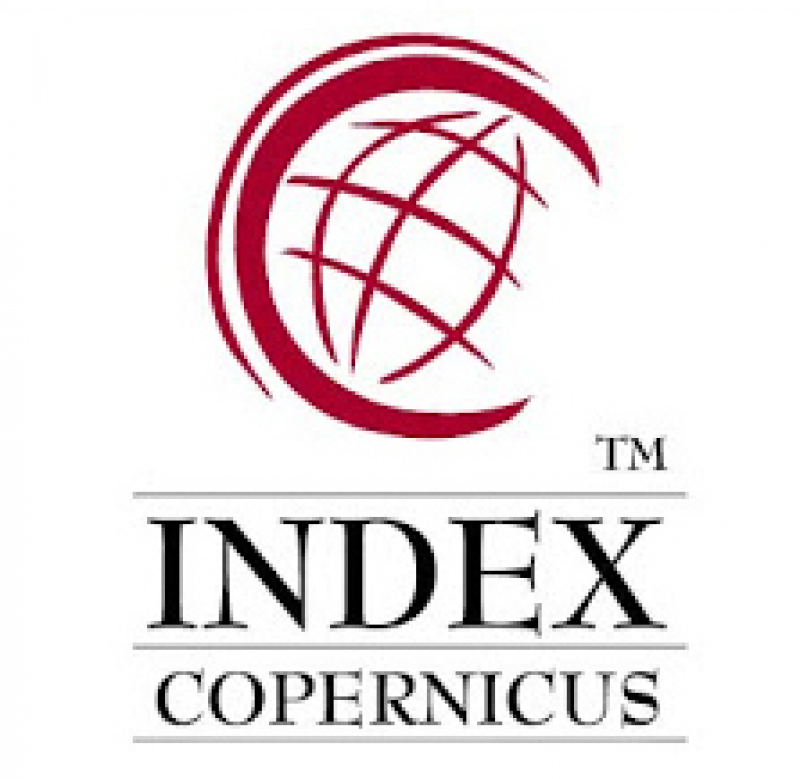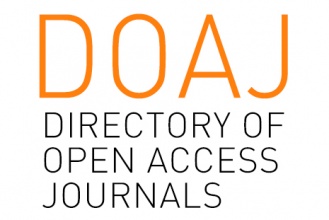The Contribution of EFL Students’ Learning Styles and Strategies toward Their Achievement
Abstract
This study aimed to investigate the students’ learning styles and strategies and determined the statistically significant contribution of students’ learning styles and learning strategies toward their achievement. The research was conducted for Bachelor Students in English Language Education at UNY in the academic years 2019, 2020, and 2021. The population was 705 students, and the sample was 250, which was revealed through stratified random sampling approaches. This study was a quantitative survey using the Learning Styles Questionnaire developed by (Merce, 2006) and the Learning Strategies Questionnaire by (Bessai, 2018). The result indicated that the EFL students' Bachelor in English Language Education was Visual learning style and Metacognitive learning strategies. Moreover, this study showed that the students' learning styles and strategies have contributed significantly to their achievement. In future research, the study may provide better results if it uses mixed methods by combining both qualitative and quantitative methods.
Keywords
Full Text:
PDFReferences
Al-Qahtani, M. F. (2013). Relationship between English Language, Learning Strategies, Attitudes, Motivation, and Students’ Academic Achievement. Education in Medicine Journal, 5(3), 19–29. https://doi.org/10.5959/eimj.v5i3.124.
ALQahtani, D. A., & Al-Gahtani, S. M. (2014). Assessing Learning Styles of Saudi Dental. Journal of Dental Education, June, 927–933.
Anaktototy, K. (2021). Portraying English Teachers’ Obstacles in Applying 2013 Curriculum for High School Level. Eralingua: Jurnal Pendidikan Bahasa Asing Dan Sastra, 5(2), 327. https://doi.org/10.26858/eralingua.v5i2.14957.
Angelianawati, L. (2017). The Contribution of Students’ Beliefs About Language Learning, Learning Styles, And Language Learning Strategies toward The English Achievement of the Eleventh Grade Students of State Senior High Schools in Singaraja. Jurnal Ilmiah Pendidikan Dan Pembelajaran Ganesha, 1(2), 1–14.
Ariastuti, M. D., & Wahyudin, A. Y. (2022). Exploring Academic Performance and Learning Style of Undergraduate Students in English Education Program. Journal of English Language Teaching and Learning, 3(1), 67–73. https://doi.org/10.33365/jeltl.v3i1.1817.
Balci, O. (2017). An Investigation of the Relationship between Language Learning Strategies and Learning Styles in Turkish Freshman Students. English Language Teaching, 10(4), 53. https://doi.org/10.5539/elt.v10n4p53.
Bessai, N. A. (2018). Using Oxford’s Strategy Inventory of Language Learning (SILL) to Assess the Strategy Use of a Group of First and Third Year EFL Algerian University Students. Technology, and Sciences (ASRJETS) American Scientific Research Journal for Engineering, 42(1), 166–187. http://asrjetsjournal.org/.
Celce-Murcia, Marianne, Brinton, Donna M., Snow, M. (2013). Teaching English as a Second of Foreign Language (Fourth Edition) (4th Editio). Heinle ELT.
Creswell John W. (2012). Educational research planning, conducting, and evaluating Quatitative and Qualitative Research. Pearson Education.
Feng, Y., Iriarte, F., & Valencia, J. (2019). Relationship Between Learning Styles, Learning Strategies and Academic Performance of Chinese Students Who Learn Spanish as a Foreign Language. Asia-Pacific Education Researcher, 29(5), 431–440. https://doi.org/10.1007/s40299-019-00496-8.
Ganji, K. K., Alam, M. K., Gudipaneni, R. K., Algarni, H., Munisekhar, M. S., Hamza, M. O., Mousa, M. A., & Sghaireen, M. G. (2022). Do learning style preferences influence the cumulative gross point average and self directed learning hours in dental students: a preliminary study. BMC Medical Education, 22(1), 1–7. https://doi.org/10.1186/s12909-022-03535-z.
Ghaffari, R., Ranjbarzadeh, F. S., Azar, E. F., Hassanzadeh, S., Safaei, N., Golanbar, P., Mazouchian, H., & Abbasi, E. (2013). The Analysis of Learning Styles and Their Relationship to Academic Achievement in Medical Students of Basic Sciences Program. Research and Development in Medical Education, 2(2), 73–76. https://doi.org/10.5681/rdme.2013.017.
Ghonchepour, M., & Moghaddam, M. P. (2018). The Role of Intelligence in Learning English as a Foreign Language. Research in English Language Pedagogy, 6(1), 25–38.
Gohar, M. J., & Sadeghi, N. (2015). The Impact of Learning Style Preferences on Foreign Language Achievement: A Case Study of Iranian EFL Students. Procedia - Social and Behavioral Sciences, 171, 754–764. https://doi.org/10.1016/j.sbspro.2015.01.188.
Gu, Y. (2012). Learning Strategies: Prototypical Core and Dimensions of Variation. Studies in Self-Access Learning Journal, 3, 330–356. https://doi.org/10.37237/030402.
Habók, A., & Magyar, A. (2018). The effect of language learning strategies on proficiency, attitudes and school achievement. Frontiers in Psychology, 8(JAN), 1–8. https://doi.org/10.3389/fpsyg.2017.02358.
Khademi, M., Motallebzadeh, K., & Ashraf, H. (2013). The relationship between iranian EFL instructors’ understanding of learning styles and their students’ success in reading comprehension. English Language Teaching, 6(4), 134–142. https://doi.org/10.5539/elt.v6n4p134.
Li, J., & Qin, X. (2006). Language learning styles and learning strategies of tertiary-level english learners in China. RELC Journal, 37(1), 67–90. https://doi.org/10.1177/0033688206063475.
Merce. (2006). that Questionnaire Learning Style. https://learning.ucmerced.edu/sites/learning.ucmerced.edu/files/page/documents/learningstylequestionnaire.pdf.
Mulalic, A., Shah, P. M., & Ahmad, F. (2009). LEARNING-STYLE PREFERENCE OF ESL STUDENTS. ASEAN Journal of Teaching & Learning in Higher Education, 21(4), 162.
Mulyani, S. (2020). Language Learning Strategies of Successful EFL Learners. International Journal in Applied Linguistics of Parahikma, 2(1), 31–39.
Parnrod, U., Darasawang, P., & Singhasiri, W. (2014). Styles, Strategies & Tasks: Are They Related? PASA, 47(June). http://www.springer.com/series/15440%0Apapers://ae99785b-2213-416d-aa7e-3a12880cc9b9/Paper/p18311.
Pratiwi, A. (2022). The Relationship between Learning Strategies and Learning Style Preferences toward Learners’ Reading Comprehension. Sustainable Jurnal Kajian Mutu Pendidikan, 5(1), 133–152. https://doi.org/10.32923/kjmp.v5i1.2293.
Pritchard, A. (2008). Ways of Learning. The Lancet, 246(6365), 239. https://doi.org/10.1016/S0140-6736(45)91319-5.
Rustam, N. S., Hamra, A., & Weda, S. (2016). The Language Learning Strategies Used by Students of Merchant Marine Studies Polytechnics Makassar. ELT Worldwide: Journal of English Language Teaching, 2(2), 77. https://doi.org/10.26858/eltww.v2i2.1689.
Salam, Urai; Sukarti, Zainal, A. (2020). Salam.pdf. Journal of English Teaching, 6(2), 111–121. https://doi.org/https://doi.org/10.33541/jet.v6i2.1734.
Tabatabaei, O., & Mashayekhi, S. (2012). The Relationship between EFL Learners’ Learning Styles and their L2 Achievement. Procedia - Social and Behavioral Sciences, 70, 245–253. https://doi.org/10.1016/j.sbspro.2013.01.061.
Taheri, H., sadighi, F., Bagheri, M. S., & Bavali, M. (2019). EFL learners’ L2 achievement and its relationship with cognitive intelligence, emotional intelligence, learning styles, and language learning strategies. Cogent Education, 6(1). https://doi.org/10.1080/2331186X.2019.1655882.
Tahmina, T. (2022). Language Learning Style Preferences of Successful Efl Learners of Bangladesh. The Journal of English Literacy Education: The Teaching and Learning of English as a Foreign Language, 9(2), 115–125. https://doi.org/10.36706/jele.v9i2.19335.
Ying-Chun, L. (2009). University Freshmen in Taiwan. Tesol Quarterly, 43(2), 255–280.
DOI: http://dx.doi.org/10.18415/ijmmu.v12i1.6600
Refbacks
- There are currently no refbacks.
Copyright (c) 2025 International Journal of Multicultural and Multireligious Understanding

This work is licensed under a Creative Commons Attribution-NonCommercial-NoDerivatives 4.0 International License.
https://ijmmu.com
editor@ijmmu.com
facebook.com/ijmmu
Copyright © 2014-2018 IJMMU. All rights reserved.



































